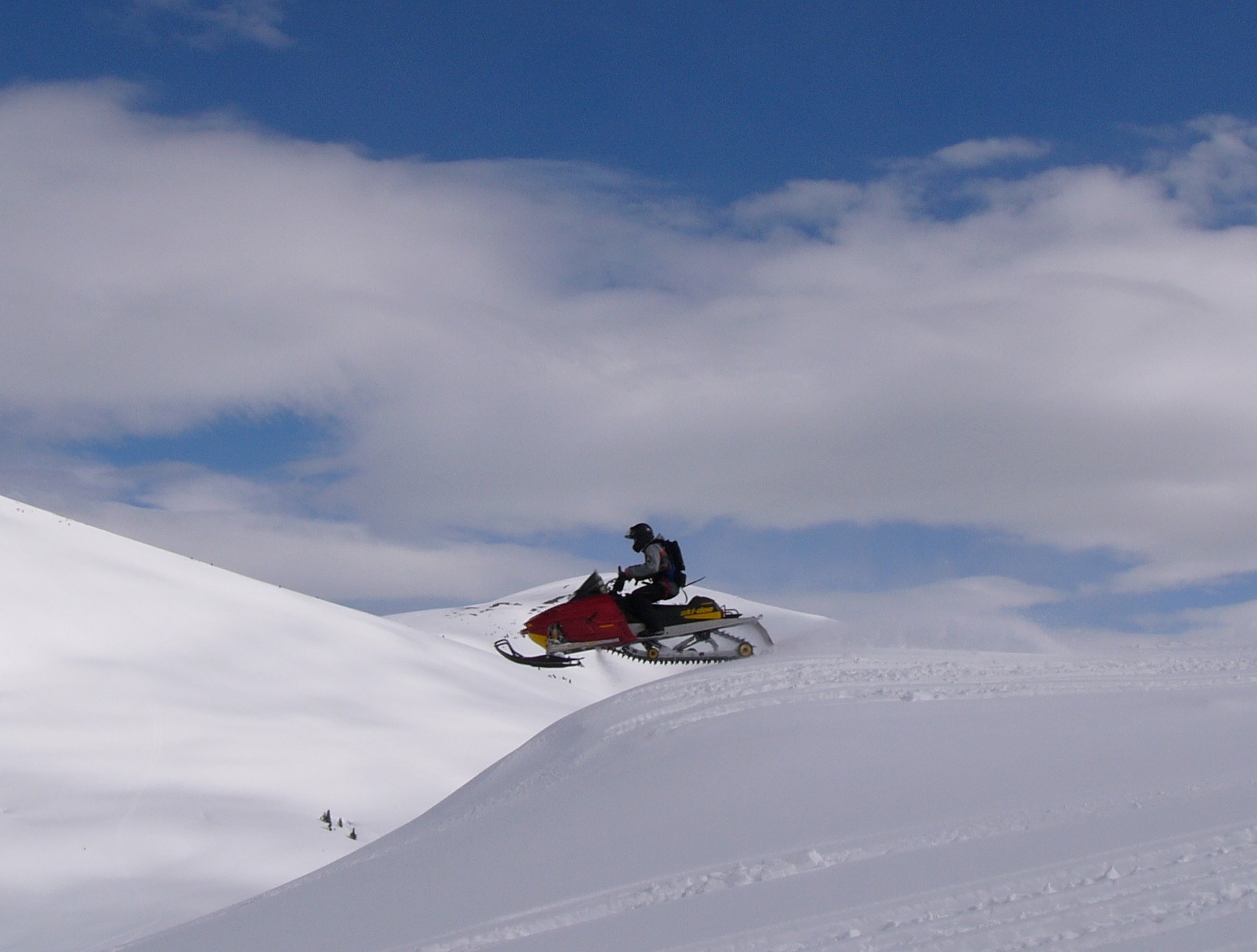What Flatlanders Need To Know About Mountain Versus Trail Riding…
Related: Try Crowsnest Pass For Trails & Mountains
What’s different about mountain snowmobiling versus trail riding? Mountain sledders and trail riders have much in common: love of snowmobiles, great snow conditions, adventure, scenery, camaraderie and fun. Almost everything else is different.
Mountain snow machines have high handlebars with grab straps for easier manoeuvring while standing. They are usually lighter weight, differently geared and boast wider skis, narrower stances, and extra long tracks with larger paddles.
Meanwhile, trail snowmobiles are primarily for seated use. Typically, with more windshield, lower handlebars, narrower skis and wider stances. Plus shorter tracks, often studded and with smaller paddles.
Either of these purpose-built sleds can feel alien to riders used to the other kind. And the riding experiences are totally different too. Meanwhile, if you’re interested in more mountain riding, check out the rest of my Western Canada articles.
Mountain Versus Trail Riding – Riding Styles
Mountain riders do more standing and kneeling, shifting from one running board to the other, and guiding their sleds with instant body language. Trail riders mostly sit, leaning into corners, gripping with thigh muscles, and using lots of upper body for manoeuvring. Trail riding is about distance and destinations…easily 250 kilometres or more in a day.
Meanwhile, a good day on the mountain is usually less than 100 klicks, consisting of riding from the trailhead to the alpine and back again after playtime is over. Mountain riders tend to do more standing around, talking and watching others challenge the slopes; trail riders tend to get on and ride steadily in groups, with fewer breaks.
Mountain Versus Trail Riding – Wear & Gear
Mountain riders discovered layering long before trail riders. Today, most wear waterproof, breathable shells to keep the moisture out. Generally, mountain riding usually occurs in less extreme temperatures. For trail riding, -25˚C and lower isn’t unusual, and that’s before wind and speed chill. So trail riders tend to wear heavier outerwear with fewer inner layers; many still wear jeans and sweat shirts. Trail riders typically carry essentials in bags on their sleds.
On the other hand, most mountaineers, wary of being separated from their machine, wear backpacks, stuffed with essentials and survival gear. Typically, mountain riders carry more safety equipment than trail riders. Including shovel, probe and transceiver for avalanche rescue.
Fewer carry the necessities for water rescue, like a buoyant suit, ice picks and throw rope as trail riders do. And I’ve never seen mountain riders with the helmet-to-helmet communicators that some trail riders favour.
Mountain Versus Trail Riding – Trail Use

These two kinds of snowmobilers also use trails differently. In the mountains, trails are how you get to the play areas. In the flatlands, trails are where you play. A long trail in the mountains may be 30 or 40 kilometres; usually each area has one main access route and maybe an offshoot or two, sometimes groomed, sometimes not maintained.
On the other hand, most trail riding routes are groomed for hundreds of kilometres, connecting to many other similarly smoothed trails. Trail riding systems tend to have extensive signage and mapping, which are considerably less prevalent in most mountain areas. Most trails are laid out to connect towns and services by sled. Mountain trails generally have no services and are only used to connect parking, cabins and play areas.
Mountain Versus Trail Riding – Terrain and Experiences
Another difference is altitude and terrain. Mountain heights make oxygen thin and expending effort can be a hard-breathing chore, especially for unclimatized flatlanders. Generally, mountain terrain is much less forgiving, harder work to navigate, more remote from help, easier to get lost in, and probably more risky to ride. Because they are surrounded by play area, like a boat is on the water, mountain riders have to be aware a full 360˚. Normally, mountain riding does not occur at night.
Trail riders, on the other hand, ride more constantly and encounter more traffic, including road crossings. Their riding area is primarily linear, so trail riders concentrate their awareness more in front and behind. Although many trail riders do not ride at night, some do: nine out of ten flatland fatalities do occur after dark, usually involving speed and alcohol.
Finally, many trail riders snowmobile directly from home. While trail riders may trailer their sleds to a tour destination periodically, mountain riders normally transport their sleds to the trailhead…many using specialized sled platforms mounted on the backs of pick up trucks. These platforms are few and far between in the flatlands of eastern Canada.
I’m sure to have missed some other key differences, but reading this, I think you’ll have a better understanding of why mountain sledding and trail riding are like apples and oranges…and that’s a good reason to try both!
The tips and advice in this blog are the opinions of the author, may not work in every situation and are intended only for the convenience and interest of the reader, who has the personal responsibility to confirm the validity, accuracy and relevancy of this information prior to putting it to their own use.

